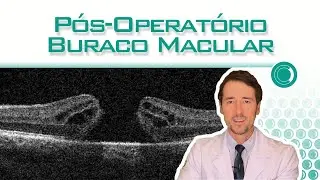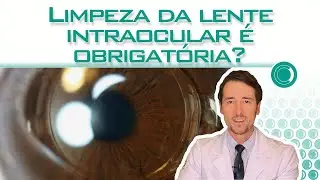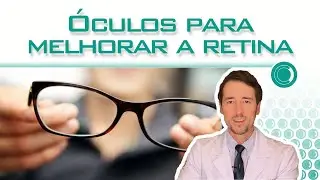When floaters appear, do you always need a laser?
The Importance of Laser in Vitreous Detachment: When is it Necessary?
In the world of ophthalmology, vitreous detachment is a natural phenomenon that occurs as we get older. This process can generate concerns and doubts, especially when it comes to the need for laser intervention. In this article, Dr. Mário Bulla, a renowned ophthalmologist and retinal surgeon, clarifies the complex scenario surrounding vitreous detachment and offers valuable insights into when laser is really necessary.
Vitreous Detachment: An Overview:
The vitreous is a jelly-like substance that lies inside the eye and, over time, tends to detach from the retina. When this happens, we call it vitreous detachment. This process is usually a normal part of eye ageing and does not necessarily cause alarm.
Warning symptoms:
However, it is important to be aware of the warning symptoms that can arise when vitreous detachment occurs. These include the perception of floaters (small dots or floating bodies in the vision), blurred vision and flashes of peripheral light. If you experience these symptoms, it is essential to seek eye care quickly.
The Role of the Laser in Vitreous Detachment:
The main question many patients have is whether every vitreous detachment requires a laser procedure. The answer is no, but with important nuances. Dr. Mário Bulla clarifies that the laser is recommended in cases where the vitreous detachment has led to a rupture in the retina. This rupture is a potentially serious situation that can lead to retinal detachment, requiring urgent surgical intervention to preserve vision.
The Variety of Cases:
It is crucial to understand that each case is unique. Studies show that the rate of retinal rupture following vitreous detachment varies significantly, from 4% to over 40%. Therefore, the decision to perform the laser depends on the detection of a rupture during the ophthalmology consultation.
Prevention and monitoring:
In addition to ruptures, there are other situations in which the laser may be indicated, such as in patients with peripheral retinal degeneration, especially of the lattice or snail track type, who are more prone to retinal detachment. However, if vitreous detachment is diagnosed without any retinal changes, the laser is not necessary.
Conclusion:
In summary, vitreous detachment is a common eye condition that may or may not require laser intervention, depending on the detection of retinal breaks or other specific conditions. The decision is individualized and should be made on the basis of regular ophthalmological consultations and follow-up. Dr. Mário Bulla emphasizes the importance of seeking care at the first sign of symptoms and following the advice of an experienced ophthalmologist to preserve eye health.
at minute 4:32 where it says retinal detachment, it's retinal mapping
Follow us on instagram: / retina.bulla
This video and its comments are not a substitute for a doctor's consultation and are for educational purposes only. They should not be used to make decisions, for which a face-to-face consultation with a specialist doctor is necessary.
Author:
Dr. Mário César Bulla
Cremers 28120
Ophthalmologist - Retinologist
www.clinicabulla.com.br
www.especialistaemretina.com.br
Instagram: @retina.bulla
Video URL: • Quando aparecem moscas volantes, semp...
@Retina e Vítreo
#retina
#ophthalmology
#vision
0:00 Do you always need a laser when floaters appear?
1:00 What is the vitreous?
1:40 Symptoms of vitreous detachment.
2:48 Indications for laser.
4:57 Conclusion.































